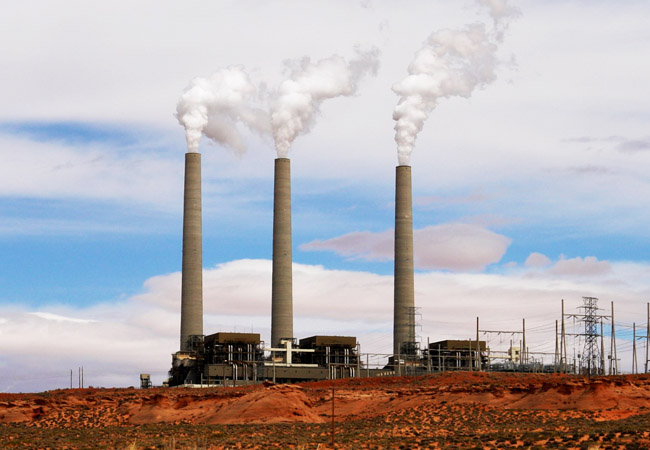
Photo Credit: Alex E. Proimoson Flickr
Environmental Pollution 101
Environmental pollution is an unfortunate result of our modern day lives. We need to come together to solve the worst impacts of environmental pollution by sorting out the need for environmental health protections with the need for commerce and everyday necessities. Finding the right balance to manage environmental issues can be hard, but it’s up to people like you and me to do our part in our everyday lives while pushing for real change on a much bigger scale. I’ve laid out some basics on this page; I’ve rightly called it Environmental Pollution 101.
Air Pollution
Hazardous Air Pollutants (HAPS)
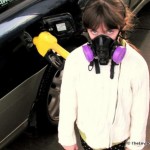
© TheEnvironmentalBlog.org
Hazardous air pollutants are pollutants that are recognized or presumed to cause cancer and/or other other major health issues including birth defects and other reproductive effects. The U.S. Environmental Protection Agency (EPA) works with tribal, local, and state governments to help decrease the amount of toxics released into the environment. The EPA has recognized 187 pollutants as the most harmful to human and environmental health. Some examples of those pollutants are found in everyday products such as perchlorethlyene, which is typically emitted by non-green dry cleaning businesses, and benzene which is in gasoline.
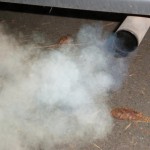
© TheEnvironmentalBlog.org
Benzene, in particular, is especially hazardous in the Pacific Northwest of the United States with the highest levels in the nation. This is due to higher than normal benzene content derived from Alaskan oils. Benzene is odorless and is a component of your gasoline. It is a dangerous pollutant and highly toxic in our air. People are generally exposed to vapors from benzene through breathing contaminated air or through skin exposure. The federal government knows this problem can lead to cancer and other sicknesses. Because children don’t have fully developed immune systems, they are the most vulnerable to benzene fumes.
Common ways people can be exposed to toxic air pollutants:
- Water can be contaminated by air pollutants, so drinking it will expose you.
- Vegetables and fruits that are grown in soil that is contaminated will expose you to pollutants if consumed.
- Making skin contact with contaminated water (think water skiing), soil, or dust.
- Inhaling in polluted air (people breathe polluted air everyday).
- Children are especially vulnerable to ingesting contaminated soil when they play outside and then place their hands in their mouths.
- One can be exposed food products that are contaminated, an example is eating contaminated fish; eggs, milk, or meat that come from animals who ate contaminated sources of food.
Once these harmful pollutants enter your body, certain pollutants will tend to build up in your body tissue. This means that humans and other species at the top of the food chain typically are more prone to the build up of toxic pollutants in their bodies. That is why people who eat a lot fish can build up mercury in their systems and then suffer severe side effects from mercury poisoning.
Known Effects of Environmental Pollution
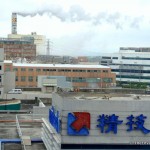
© TheEnvironmentalBlog.org
The known health effects caused by the build of toxic environmental pollution typically lead to increased chances of developing cancer. This all depends on the amount of exposure, duration of exposure, and the concentrations of the exposure. The more someone is exposed to environmental pollution, the more likely it is that health complications will emerge. Health issues can include neurological issues, reduced fertility, damage to the immune system, respiratory issues, and developmental issues.
Environmental Pollution Pictures
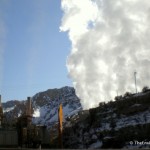
© TheEnvironmentalBlog.org
I have a couple sets of environmental pollution pictures that show various polluted scenes with a little explanation. My Environmental Pollution Pictures page is one of my most popular pages on this site.
My air Pollution Pictures are pretty good too. I took them in different parts of the world. I am trying to build up a collection of pollution pictures in my travels because I think it shows how far we need to go in environmental education and alternative solutions to our way of life.
If you have any environmental pollution pictures or air pollution pictures you’d like to share, send me an email at:
JT [at] theenvironmentalblog.org with subject: “image submission”.
Greenhouse Gas Emissions
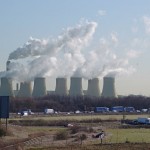 Greenhouse gases are gases that retain heat in the atmosphere. This created something called the greenhouse effect. It is normal function of our Earth. There are naturally occurring greenhouse emissions into the atmosphere like carbon dioxide. This happens through normal and natural processes and human activities. You might be surprised to find out that there are more greenhouse gases than all that carbon dioxide stuff you’ve been hearing about. There are some greenhouse gases that are only emitted by human activities such as fluorinated gases.
Greenhouse gases are gases that retain heat in the atmosphere. This created something called the greenhouse effect. It is normal function of our Earth. There are naturally occurring greenhouse emissions into the atmosphere like carbon dioxide. This happens through normal and natural processes and human activities. You might be surprised to find out that there are more greenhouse gases than all that carbon dioxide stuff you’ve been hearing about. There are some greenhouse gases that are only emitted by human activities such as fluorinated gases.
Greenhouse gases that release into the atmosphere due to human induced exploits include:
Carbon Dioxide (CO2): The most well known of the greenhouse gases, you’ve typically heard about carbon dioxide from a Greenpeace advocate, the weatherman, or on from some liberal news anchor. Whatever your thoughts are on climate change, science clearly tells us that carbon dioxide goes into our atmosphere from the process of burning fossil fuels. The main fossil fuels we burn are coal, natural gas, and oil. Carbon dioxide is also released into the atmosphere by the burning of solid waste (think incinerators), trees and wood products (think biomass plants), and also as a result of other chemical reactions (like in the manufacturing process of cement). As part of a normal carbon cycle, carbon dioxide is removed from our atmosphere (some people call it ‘sequestration’) when it is absorbed by ocean plankton and by plant-life.
Methane (CH4): Sometimes not recognized as a greenhouse gas, methane is culprit number two. It is emitted in the process of making and in the process of transporting natural gas, oil, and coal. A major source of methane emissions comes from the agriculture industry and from big livestock operations. Another big contributor is the decay of organic waste in landfills, although some municipal’s have learned to capture those methane emissions for energy production.
Nitrous Oxide (N2O): Our friend nitrous oxide is our third greenhouse gas emitter that is the product of industrial and agricultural activities. Nitrous oxide is also emitted when burned through fossil fuels and other wastes.
Fluorinated Gases: And finally we have perfluorocarbons, sulfur hexafluoride, and hydrofluorocarbons which are all synthetic, industrial-strength greenhouse gases (which are man-made creations) emitted from a hodgepodge of industrial processes. These gases are considered potent greenhouse gases because they have many times the greenhouse effect as the carbon-dioxide and are thus emitted in smaller quantities. Sometimes they’re referred to as high global warming potential gases (GWP).
There are actually more greenhouse gases than this, but the International Panel on Climate Change (IPCC) made a nifty list for us here in Chapter two.
Particulate Matter (PM)
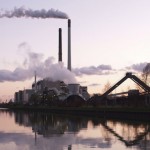 Particulate matter or PM are particles that are suspended in air which include soot, dust, dirt, and liquid droplets. Since fine particulates can be extremely small in size, the can suspend in the air for long periods of time and travel quite a distance from their origin. Visible soot or smoke is often the result of particles that are large or dark or both while many particles are so small they cannot be seen by the human eye.
Particulate matter or PM are particles that are suspended in air which include soot, dust, dirt, and liquid droplets. Since fine particulates can be extremely small in size, the can suspend in the air for long periods of time and travel quite a distance from their origin. Visible soot or smoke is often the result of particles that are large or dark or both while many particles are so small they cannot be seen by the human eye.
If you happen to see a reference like PM2.5, that is referring to particles that are 2.5 microns or smaller in diameter. In terms of meters that’s 0.0000025 meters and can only be seen by special devices, like a microscope or an electron microscope. Some fine particulates like these originate from burning fossil fuels in cars, buses, trucks, industrial processes, and wood burning. It is important to know that PM2.5 is regulated by the Environmental Protection Agency in the United States. The NAAQS, or National Ambient Aire Quality Standards, was adopted in 1997 to put limits on the amount of fine particulates could be released into the air because of the known negative effects on the health of the public. It’s good to know that the EPA is on our side to protect us from the worst effects of environmental pollution like PM2.5, but everyone should be aware of polluters that are situated near where you live.
Use this tool by the EPA to find out what environmental pollution is being released in your neighborhood (tool only works for The United States).
Water Pollution
Pollutant Discharge Elimination System Permits
If big and small industry had their way, they would pollute and contaminate our water with various chemicals and who knows what else. Thankfully, in the United States, the Clean Water Act enabled the government to create a permit program called the National Pollutant Discharge Elimination System. That system which is operated by the state governments requires a special permit for municipal and industrial sources to release water into open surface water like lakes, rivers, or oceans. The NPDES system lead to cleaner drinking water and an overall cleaner environment since its introduction in the United States.
Polluted Runoff and Stormwater Runoff
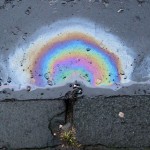 What is Stormwater Runoff? Simply put, it is the water from rain that lands on rooftops, buildings, streets, gravel lots, fields, etc. that naturally drain into close by streams, rivers, lakes, and oceans. The rain from storm water then mixes with pollutants that are already on the ground including:
What is Stormwater Runoff? Simply put, it is the water from rain that lands on rooftops, buildings, streets, gravel lots, fields, etc. that naturally drain into close by streams, rivers, lakes, and oceans. The rain from storm water then mixes with pollutants that are already on the ground including:
- grease, oil, coolants from cars, and metals
- chemicals from gardens, pesticides, and fertilizers
- failing septic systems and bacteria from pet waste
- spills, soaps, cigarette butts, etc.
Most storm water runoff enters our bodies of water without being treated or scrubbed of pollutants. Real damage can be inflicted on our waterways and micro-ecosystems from polluted stormwater like harm or death to fish. Everyday actions can help reduce the amount of pollution that ends up in our water like driving less, washing your car at a commercial washer, and by having as much vegetated land as possible on your property versus pathways and patios.
Watershed Management
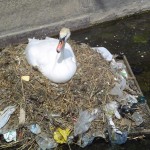 Watershed management is so important to maintain the health our water supply. Many people cities around the world tap into underground reservoirs of water for everyday use from drinking water, to showering, and laundry uses. To help reduce storm water water runoff while simultaneously helping the watershed, everyday people can collect rainwater in barrels for the garden, re-use grey water, or install a full on cistern system with filtration system. The more people are aware of environmental water pollution issues and water scarcity, the more likely people are to chip-in and do their part.
Watershed management is so important to maintain the health our water supply. Many people cities around the world tap into underground reservoirs of water for everyday use from drinking water, to showering, and laundry uses. To help reduce storm water water runoff while simultaneously helping the watershed, everyday people can collect rainwater in barrels for the garden, re-use grey water, or install a full on cistern system with filtration system. The more people are aware of environmental water pollution issues and water scarcity, the more likely people are to chip-in and do their part.
References: epa.gov, ipcc.ch, cdc.gov, eia.gov, econ.worldbank.org, cdiac.esd.ornl.gov, watershedmg.org
Small pictures credits go to commons.wikimedia.org


